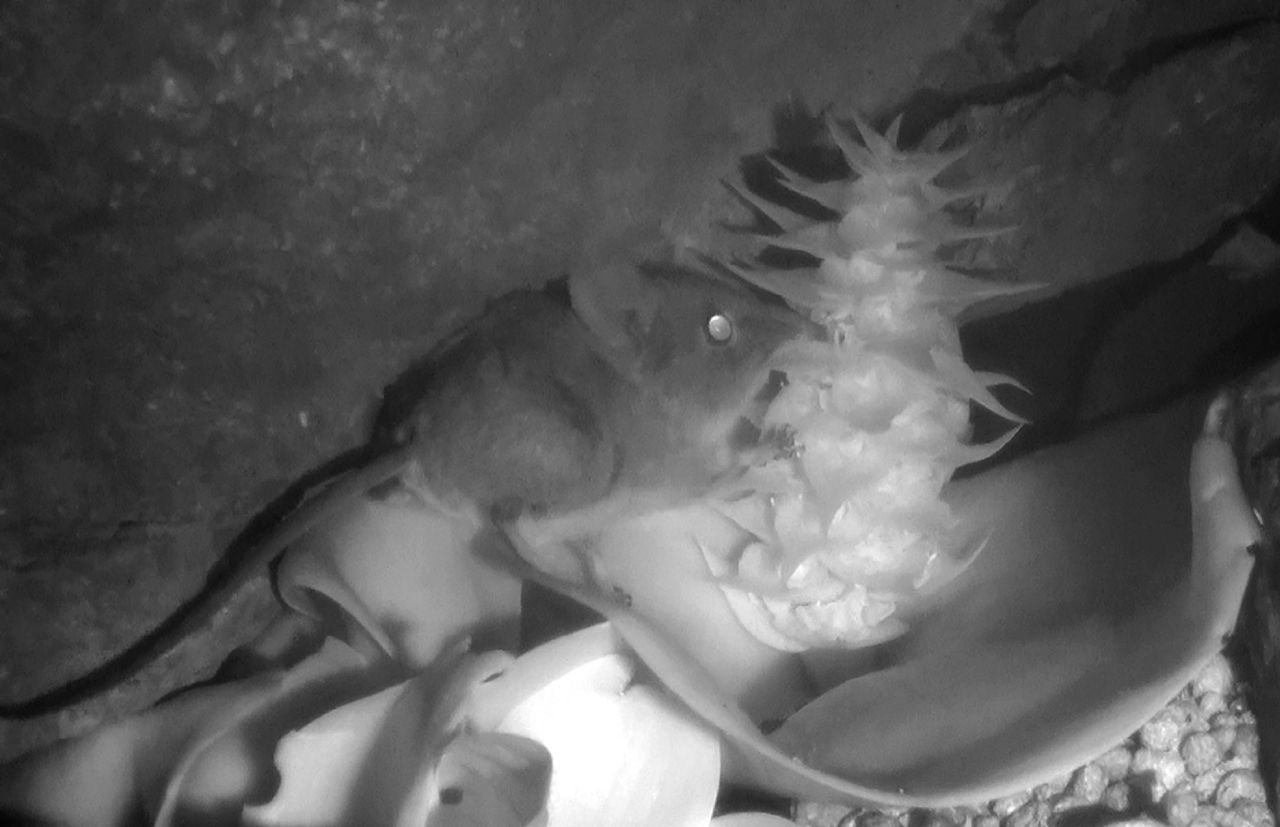The forgotten pollinators – First field evidence for nectar-feeding by primarily insectivorous elephant-shrews
DOI:
https://doi.org/10.26786/1920-7603(2015)14Abstract
Pollination of plants by non-flying mammals, such as mice (Rodentia), is a rarely observed phenomenon. Previously, elephant-shrews (Macroscelidea), small African mammals looking similar to mice, but not being related to them, were believed to be purely insectivorous and occasional flower visits of elephant-shrews in captivity were interpreted as a by-product of the search for insects. Only recently it was demonstrated that under lab conditions elephant-shrews regularly lick nectar from flowers. However, field observations of flower-visiting elephant-shrews and their role as pollinators were completely missing. Here I present the first evidence for flower visits and nectar consumption for elephant-shrews in the field. With video camcorders and infrared lights I recorded Cape rock elephant-shrews (Elephantulus edwardii) beside Namaqua rock mice (Micaelamys namaquensis) visiting flowers of the Pagoda lily (Whiteheadia bifolia, Asparagaceae) under natural conditions in the Namaqualand of South Africa. With their long tongues, the elephant-shrews visited the flowers non-destructively, definitely licking nectar, but not eating insects. The footage clearly shows that the elephant-shrews’ fur around their long noses touches the pollen-sacs and the stigmas of the flowers and that the animals’ fur is being dusted with pollen. As the elephant-shrews visited several flowers of different plants, it is obvious that they transfer pollen between the plants. This observation contributes to the knowledge about the behaviour of these representatives of a unique clade of small African mammals – especially in their natural habitat. With their behavioural and anatomical uniqueness, it is not unlikely that elephant-shrews even play a role as selective force driving floral evolution.
Appendices:
Additional supporting information is to be found:
Appendix I. With its long tongue Elephantulus edwardii licks nectar from Whiteheadia bifolia flowers, getting dusted with pollen on its nose. Infrared video.
http://www.pollinationecology.org/user-files/ JPE349_Appendix1.mp4
Appendix II. Micaelamys namaquensis licking nectar from Whiteheadia bifolia flowers, getting dusted with pollen on its nose. Infrared video.
http://www.pollinationecology.org/user-files/JPE349_Appendix2.avi
Appendix III. Micaelamys namaquensis feeding on pollen-sacs of Whiteheadia bifolia flowers. Infrared video.
http://www.pollinationecology.org/user-files/JPE349_Appendix3.avi

Downloads
Published
How to Cite
Issue
Section
License
Copyright (c) 2015 Petra Wester

This work is licensed under a Creative Commons Attribution 4.0 International License.
JPE is an open access journal which means that all content is freely available without charge to the user or his/her institution.
Authors who publish with this journal agree to the following terms:
1) Authors retain copyright and grant the journal right of first publication with the work simultaneously licensed under a Creative Commons Attribution License that allows others to share the work with an acknowledgement of the work's authorship and initial publication in this journal.
2) Authors are able to enter into separate, additional contractual arrangements for the non-exclusive distribution of the journal's published version of the work (e.g., post it to an institutional repository or publish it in a book), with an acknowledgement of its initial publication in this journal.
3) Authors are permitted and encouraged to post their work online (e.g., in institutional repositories or on their website) prior to and during the submission process, as it can lead to productive exchanges, as well as earlier and greater citation of published work (See The Effect of Open Access).
To assure a broader targeted audience, content will be included into databases (such as EBSCO) and directories (such as DOAJ).











